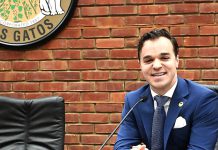Homelessness is a complex issue plaguing communities across the globe, and Los Gatos is no exception. While Los Gatos boasts prosperity and scenic beauty, it also faces individuals and families struggling with housing insecurity. Transformative Mediation (TM) can be applied to bridge the divide between stakeholders—unhoused individuals, service providers, local government, and residents—to develop a more holistic approach to homelessness in Los Gatos.
Estimates suggest there are around 58 people experiencing homelessness in Los Gatos. This information comes from the 2022 Point-in-Time Count conducted by Santa Clara County.
Transformative Mediation: Fostering Dialogue
- Focus on Relationship Building: Transformative mediation is frequently applied when the parties have ongoing relationships with one another. For example, I applied it in divorce cases where the parties have young children or they will continue to co-own property following their divorce, and they will thus continue to interact with one another. TM prioritizes mending fences and fostering better communication between the parties. While reaching an agreement is desirable, it’s secondary to the parties gaining a newfound respect and understanding for each other’s perspectives. This allows them to navigate future disagreements more constructively.
- Empowerment: Transformative mediation empowers both sides by giving them more control over the process. The mediator acts as a facilitator, helping them express themselves clearly and navigate the conversation. This empowers them to find their own solutions.
- Recognition: A core aspect of transformative mediation is recognition. The mediator ensures that each party feels heard and understood by the other. This validation helps address underlying feelings of resentment or frustration that might be fueling the conflict. By recognizing each other’s needs and concerns.
Here’s how TM can be applied in the context of homelessness in Los Gatos:
- Understanding the Needs of the Unhoused: TM can facilitate discussions between unhoused individuals and service providers. Unhoused voices are often unheard, leading to programs that miss the mark. Through TM, service providers can gain a deeper understanding of the specific needs and challenges faced by the unhoused population, informing the development of more effective support systems.
- Addressing Community Concerns: Residents of Los Gatos may have concerns about safety, sanitation, or property values due to homelessness. TM can create a space for dialogue between residents and the unhoused community. Residents can voice their concerns in a safe and respectful manner, while those experiencing homelessness can explain their circumstances and dispel stereotypes.
No doubt, many unhoused individuals harbor suspicion of and great resistance to those who claim to have their best interests at heart. However, if they can be brought into the process, this approach can foster empathy and pave the way for collaborative solutions, such as resident-led initiatives to support local shelters or community gardens managed by the unhoused.
- Fostering Collaboration Between Stakeholders: TM can bring together local government, service providers, and residents to brainstorm comprehensive solutions. TM can help the Stakeholders identify gaps in current programs and policies. Stakeholders can work together to create a more streamlined system of support, optimizing resource allocation and program effectiveness.
- Community-Based Solutions: TM can foster the creation of resident-led initiatives like donation drives, mentorship programs, or volunteer opportunities to support homeless shelters and service providers.
- Policy Advocacy: Participants can collaborate on advocating for policies that address the root causes of homelessness.
The Transformative Power of Listening
A key aspect of TM is the emphasis on active listening. This means truly hearing another person’s perspective, not just waiting for your turn to speak. In the context of homelessness, this can be transformative. Many people experiencing homelessness have faced societal rejection and stigma. TM creates a space where they are finally heard, fostering a sense of dignity and respect.
For residents and service providers, active listening can be equally transformative. By listening to the stories of those experiencing homelessness, residents may develop a deeper understanding of the root causes of the issue and shed preconceived notions.
Next Steps for Los Gatos
Phase 1: Building the Foundation
1. Convening Stakeholders
2. Recruitment and Training
3. Groundwork and Education
Phase 2: Facilitated Dialogue
1. Dialogue Sessions
2. Identifying Common Ground
3. Brainstorming Solutions
Phase 3: Action Planning and Follow-Up
1. Develop Action Plans
2. Establish Follow-Up Mechanisms
3. Transparency and Communication
Homelessness requires a community-wide response built on understanding and collaboration. By embracing TM, Los Gatos can move beyond traditional approaches and create a more just and equitable future for all its residents.










